Picking the Phillies' All-Time Single Season Lineup

In the history of professional sports, no club worldwide has lost as many games as the Philadelphia Phillies. The club traces their history all the way back to 1883, almost a century and half ago. Even though most seasons since then the Phillies have lost more games than they’ve won, they’ve had more than a few shining stars.
In constructing an all-time lineup for the Phillies, we're going to ignore all seasons pre-1903… sorry Ed Delahanty. Unfortunately, baseball was in too much of a developmental stage then to make any meaningful comparison between modern day players and players pre-World Series era.
We are also going to be leaning heavily on adjusted statistics like ERA+ and OPS+, both of which neutralize statistics for park factors and time period. For these stats, an ERA+ or OPS+ of 100 is league average, any value above or below that number is percent better or worse than league average. For example, Bryce Harper’s OPS+ in 2021 was 179, which means that his OPS in 2021 was 79% better than league average.
Lineup:
C: Darren Daulton - 1992
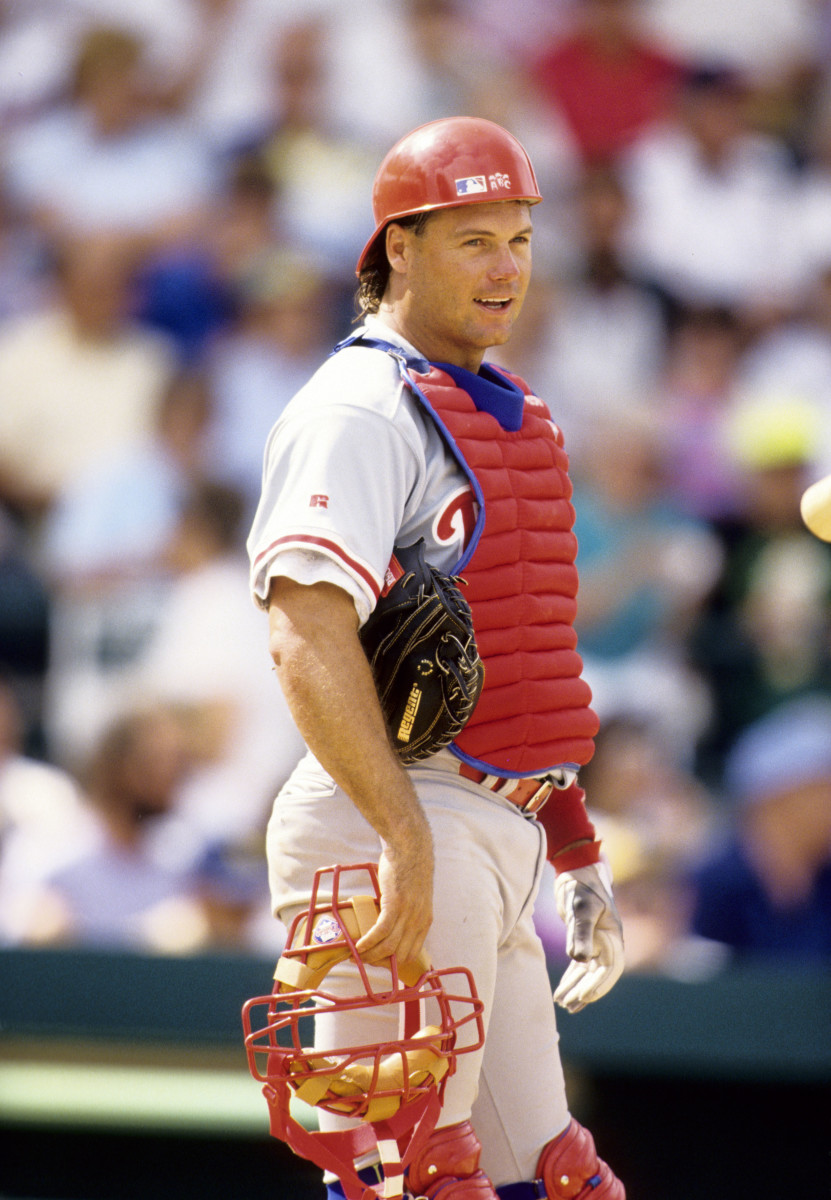
Daulton is one of only two players to feature on both the Phillies pennant winning teams of 1983 and 1993, the other being fan-favorite Larry Anderson. However, Daulton didn’t establish himself as an elite catcher until his age-30 season, 1992. To that point in his career, he’d slashed just .222/.326/.686.
Suddenly, 1992 saw Daulton burst onto the scene, slashing .270/.385/.524, good enough for an OPS+ of 156 and picking up All-Star and Silver Slugger honors in the process. Not only did Daulton exhibit power in his 27 home runs that year, but he also stole 11 bases and caught 49 would-be base stealers, leading the league that year.
While Carlos Ruiz, Mike Lieberthal, and Andy Seminick all came close to forcing their way onto the list, Daulton’s 145 games played and elite defense put him over the edge.
1B: Ryan Howard - 2006
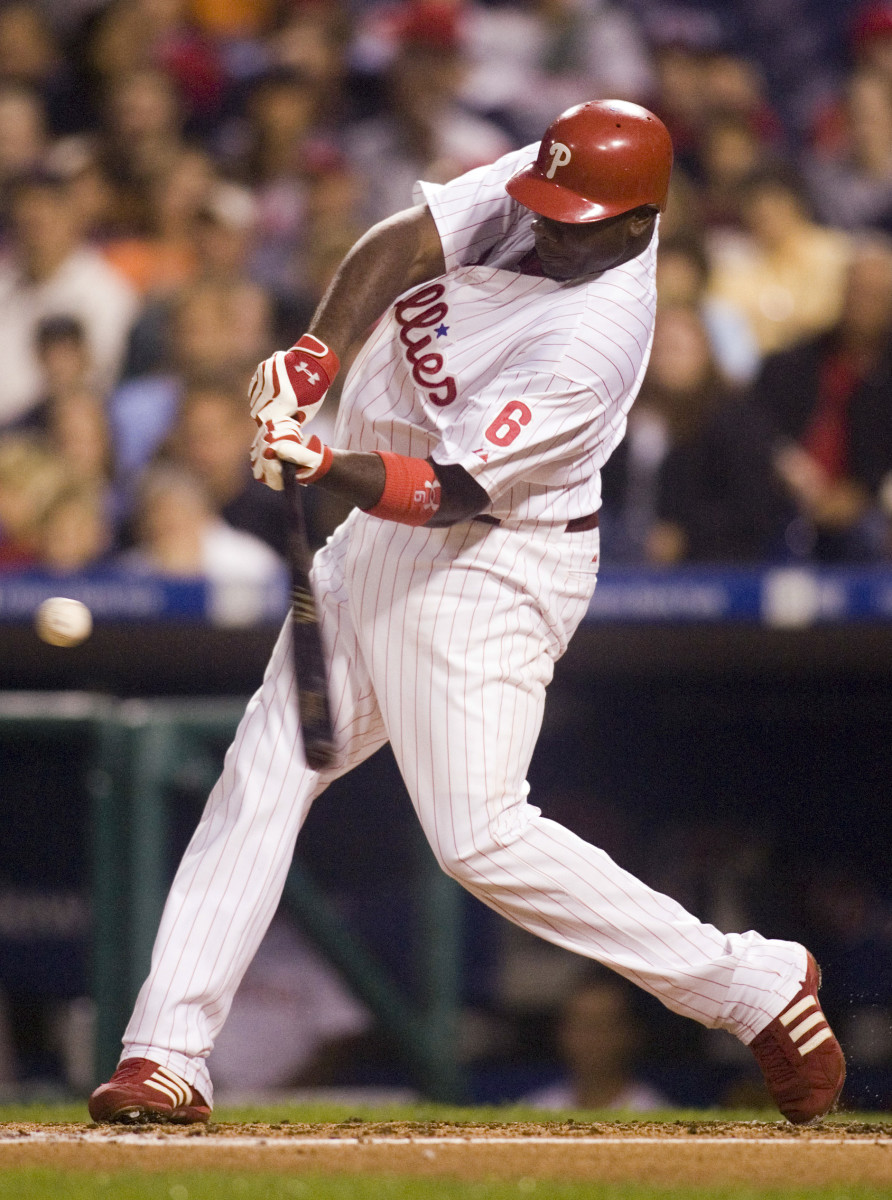
It would be easy to say 58 home runs, 149 RBI, .313/.425/.659 and leave it at that, but shockingly Howard’s 2006 season at first base has a competitor.
Howard’s OPS+ was 167 in 2006, in 1937, Dolph Camelli had an OPS+ of 170. That season, he slashed .339/.446/.587, knocking 27 home runs. Yet Camelli missed a large chunk of the season, only playing 130 games. He also didn't play against black players and was aided by Baker Bowl’s notorious 60-foot tall short porch in right field, only 280 feet from home plate.
Baseball Reference gives Camelli the edge in advanced stats like Rbaser and DRS, yet it’s difficult to 80-year-old analytics. Evaluating both players on hitting alone, a first baseman’s most important job, Howard was worth 55 Runs from Batting while Camelli was worth just 49.
2B: Chase Utley - 2007
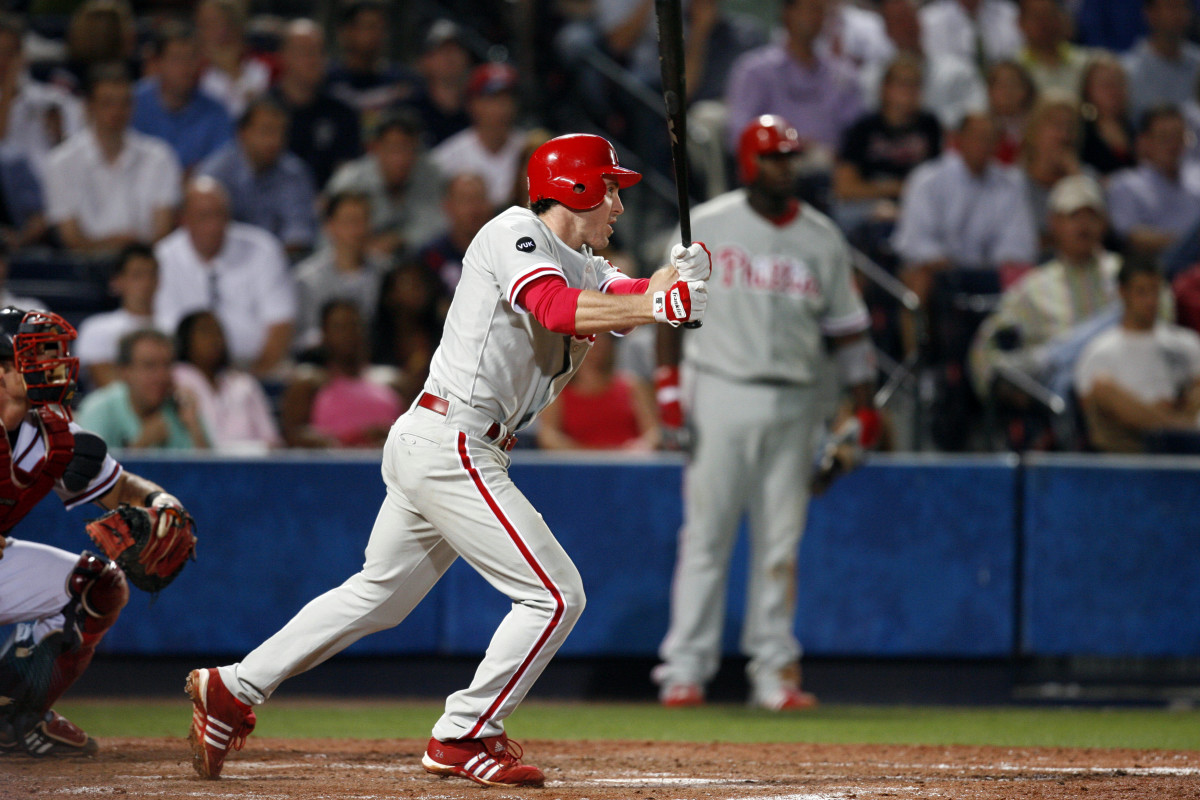
Utley is perhaps the least credited five-tool player of his generation. He could hit for power (22 HR), he hit for average (.332 BA), he played elite defense (18 DRS), and he was a brilliant base-runner (87.5 career SB%, third all-time). Utley’s stats were also inflated by his HBP ability. Utley led MLB in HBPs for three consecutive years starting in 2007 with 25.
Even though Utley only played in 132 games that season, he put up the best offensive numbers of his career by a wide margin. While he accrued more rWAR in 2008 and 2009, that can most likely be attributed to defense and baserunning stats which take 3-5 years to average out. In 2007, Utley had his highest career Runs from Batting (39), and his highest career waaWL%.
waaWL% is a statistic which attempts to boil down WAR into a rate based stat. It uses .500 as the impact of a league average player and then turns the contributions of a specific player above or below league average into a winning percentage.
In 2007, Utley had a career high .547 waaWL%. This postulates that were Utley on a team surrounded entirely by league average players, their win percentage in games Utley played would be .547.
3B: Mike Schmidt - 1980
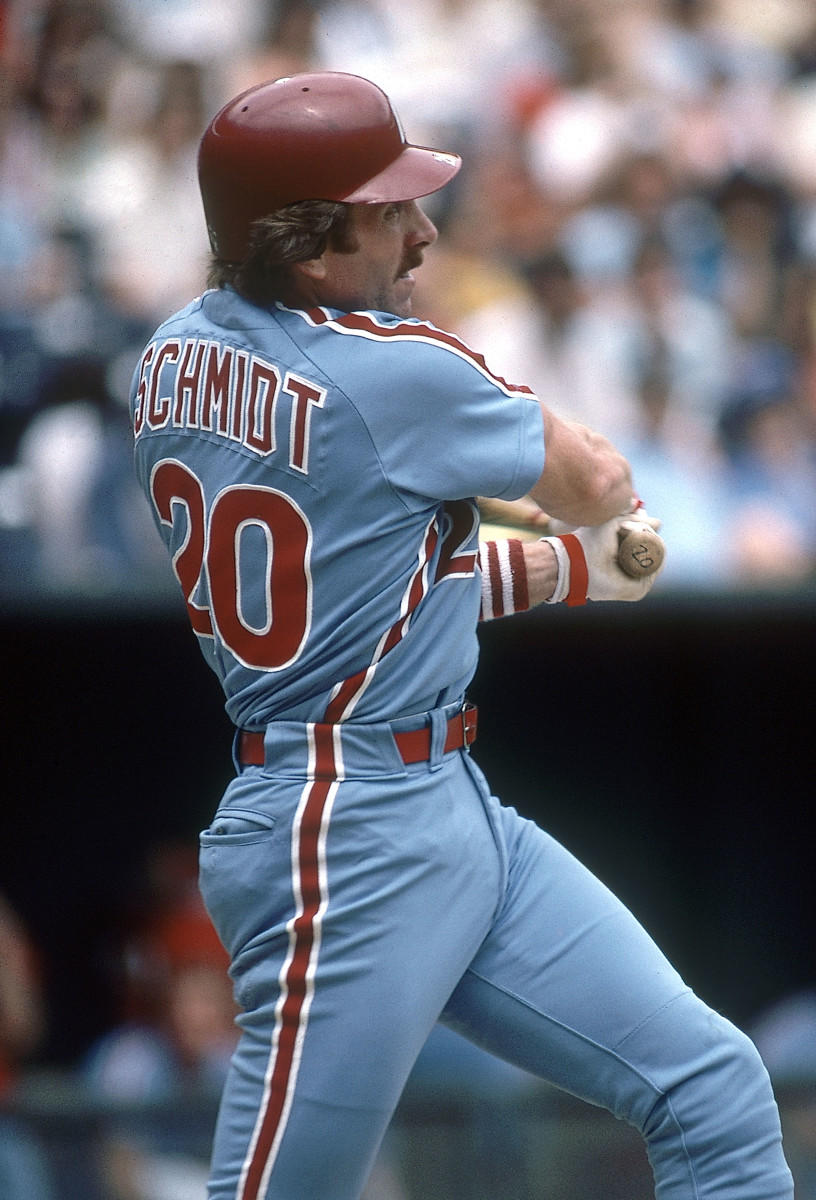
It’s not a controversial statement to say that Schmidt is the greatest Phillie ever. Surprisingly though, he might not have the best offensive season for a third baseman in Phillies history.
In 1966, Dick Allen slashed .317/.396/.632 for an OPS+ of 181, the highest mark in Phillies history for a full season player outside the deadball era. Schmidt’s offensive numbers in 1980, while not quite as eye-popping, are still impressive. He slashed .286/.380/.624 for an OPS+ of 171.
However, Allen was lacking on defense. Through his career, he was shifted from third base to left field to first base. In 1966, Allen spent 91 games at third and was worth -8 DRS, Schmidt in 1980 won his fifth of nine straight Gold Gloves and saved 11 runs on defense.
While Allen was marginally better offensively, Schmidt’s defensive prowess shines through even older analytical defensive metrics.
SS: Jimmy Rollins - 2007
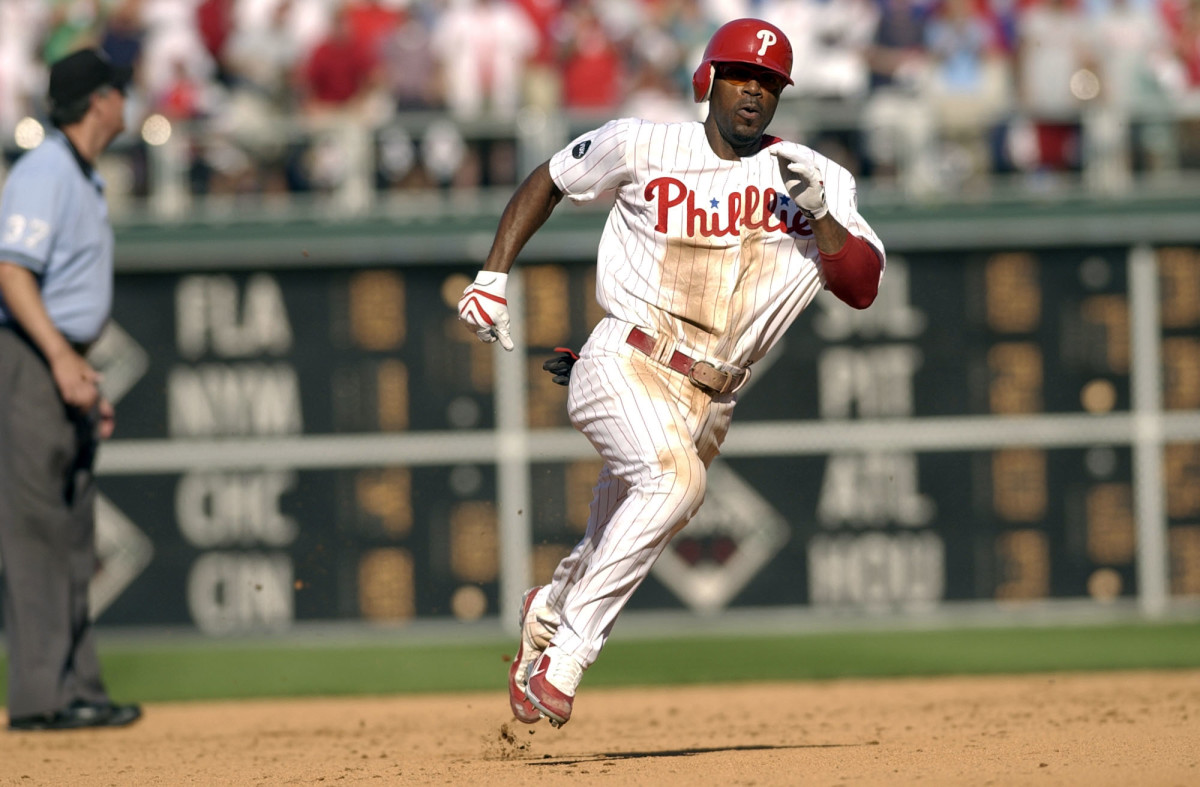
The canon of great shortstops in Phillies history is a short list. Jimmy Rollins is the only one who’s ever been both an elite hitter and an elite defender at the same time and his 2007 MVP season shines far above the rest of his play.
That year, he slashed .296/.344/.531 with 20 triples, 30 home runs and 41 stolen bases, taking home both Gold Glove and Silver Slugger honors. His 20th triple on the final day of the season made Rollins one of just four players in MLB history to complete a 20-20-20-20 season. The others being Curtis Granderson in 2007, Willie Mays in 1957, and Frank Schulte in 1911.
That is without mentioning his off-the-field contributions that season. In spring training, Rollins labeled the Phillies “the team to beat” and was a sparkplug down the stretch in helping bring Philadelphia its first postseason berth in 14 years.
LF: Sherry Magee - 1910
Though you probably haven’t heard of him, Magee may most embody the spirit of Philadelphia. Not for his .331/.445/.507 slashline in 1910 or his monstrous 175 OPS+, nor for his 49 stolen bases that season either.
No, Magee embodies the drunken Philadelphia fan who sits at the top of the stadium who wishes he could punch the umpire after a bad call, because Magee once did drunkenly punch an umpire and knock him unconscious in July of 1911. Since the year was 1911, Magee received a light suspension and was back in the lineup by August.
Though Magee did have a brilliant 1910, Lefty O’Doul slashed .398/.465/.622 with 32 home runs in 1929. Like Camelli though, O’Doul was a lefty aided by Baker Bowl’s short porch, because of this, O’Doul's OPS+ was only 161.
CF: Lenny Dykstra - 1990
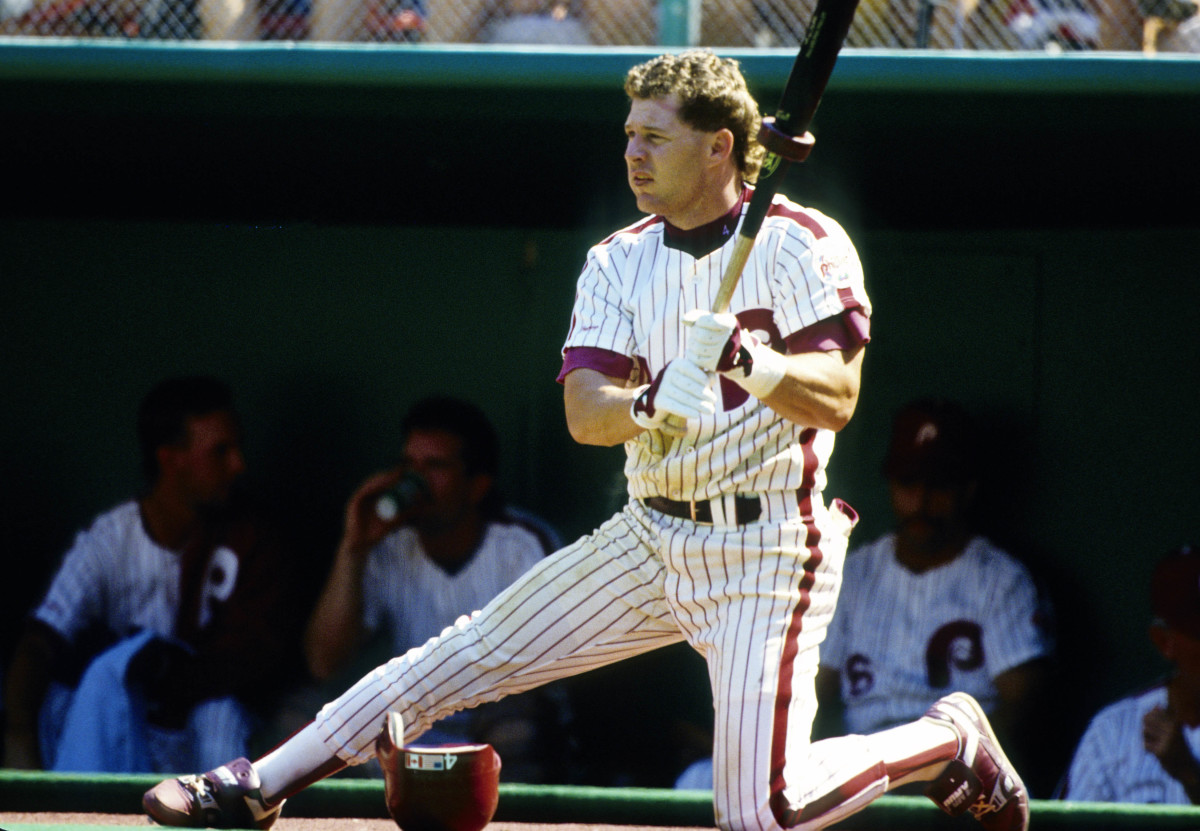
[DISCLAIMER: This player was chosen using very fallible defensive metrics, proceed at your own risk]
Dykstra had an odd career, both on-the-field and off-the-field. His post career exploits have brought notoriety to his name, but as a two way offensive and defensive player Dykstra outdid himself in 1990.
That year, he slashed .325/.418/.441 for an OPS+ of 138. He stole 33 bases and clubbed nine home runs. Yet his OPS and OPS+ in 1993 were a much more impressive .902 and 144 respectively, what made 1990 so special?
Somehow, that season Dykstra saved 25 runs on defense according to Baseball Reference. Fangraphs agrees, they postulate his defense saved over 27 runs that season. This total seems especially odd considering Dykstra never saved more than seven runs on defense during a full season outside 1990. Defensive metrics generally take years to even out considering the sample size for defense, but this outlier was too extreme to be ignored.
Had Dykstra not played such brilliant center field that season, Richie Ashburn’s 1955 season would have been the best in Phillies history. That year he slashed .338/.449/.448. Though Ashburn averaged 16 DRS at the peak of his career, he only saved six runs that season, while losing runs on the base paths. Ashburn stole 12 bags that year and was caught 10 times.
RF: Bryce Harper - 2021
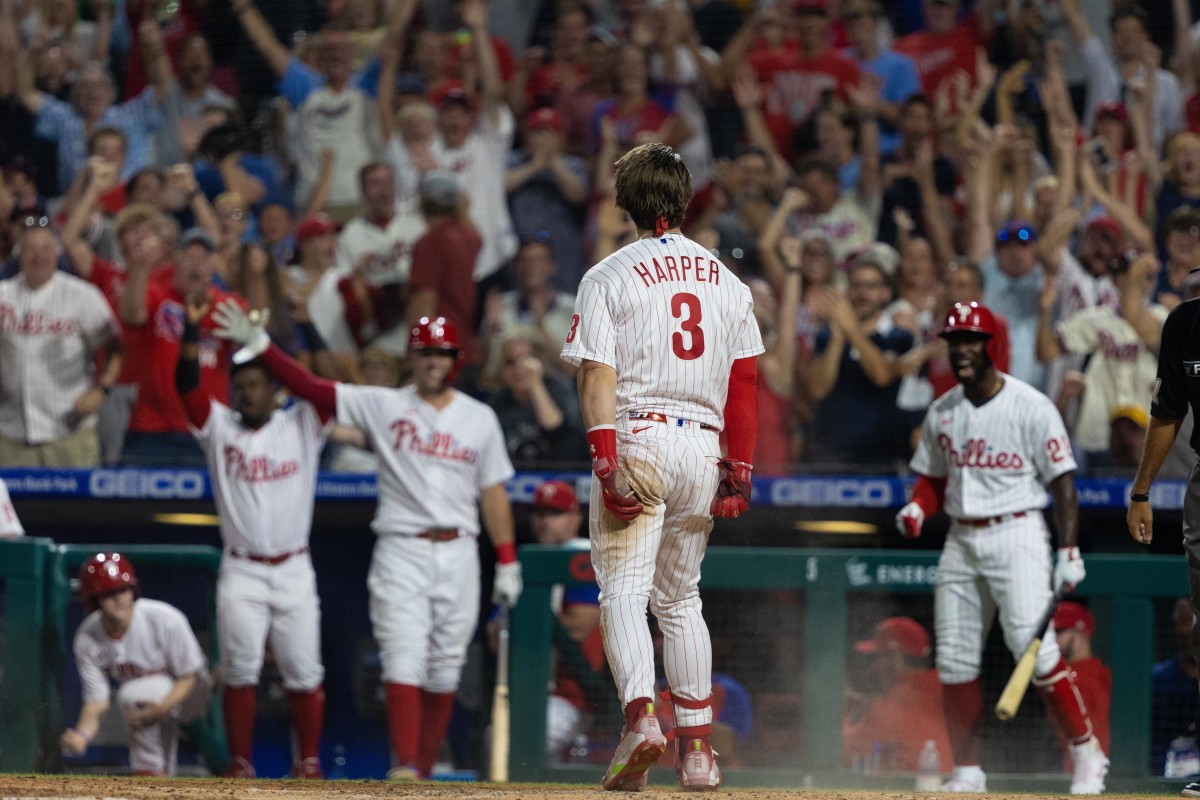
Last year, Phillies fans were given the pleasure of watching an all-time great offensive performance. Harper’s OPS of 1.044 in 2021 was the highest for a Phillie since Howard in 2006 and his OPS+ of 179 was the highest for a Phillie since Dick Allen in 1966.
Yet, there is an oft forgotten Phillies Hall of Famer who has been more valuable as an offensive player not once but arguably four times.
In 1929, Chuck Klein’s OPS was 1.065, the next year, 1.123, in 1932 it was 1.050 and 1933 it was 1.025. Strangely, Klein’s most valuable season according to OPS+ (176), rWAR (7.9) and fWAR (7.5) was his 1933 season. That season was not considered part of the “rabbit ball” years in which the ball was artificially “juiced” to increase home run rates, sound familiar?
Though Harper had a higher OPS and OPS+ in 2021 than Klein’s 1933, other advanced stats like WAR, rBAT and waaWL% favor Klein. Perhaps this is because Klein played 11 more games, or because those stats don’t recognize the advantage Klein received with Baker Bowl’s short porch. Most importantly though, Klein never played with black players.
Rotation:
#1: Pete Alexander - 1915
Over a century ago, Alexander had the best pitching season in Phillies history. While Steve Carlton’s 1972 is more apparent in modern memory, Alexander’s ERA+ of 225 is unmatched in Phillies history and it’s not particularly close. His lead over second place is 43 points.
In 1915, Alexander had an ERA of 1.22 over 376.1 IP with 38 complete games, 16 shutouts, 1.82 FIP and 5.8 K/9, he led MLB in all of these categories. Even for the tail end of the deadball era, these numbers are unheard of.
#2: Steve Carlton - 1972
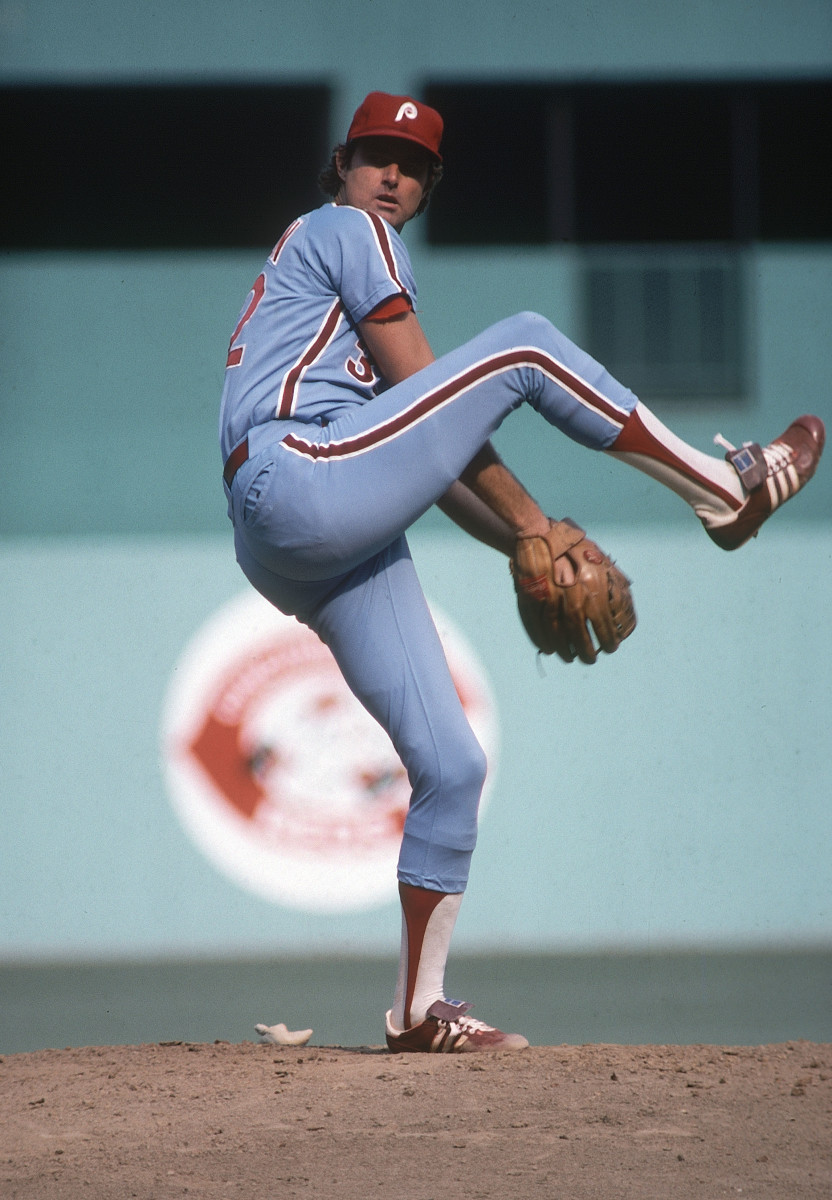
Carlton’s 1972 is often considered one of the greatest pitching seasons since the the “Year of the Pitcher” in 1968. In 1972, the Phillies won just 59 games, Carlton won 27 of those. Had he pitched for a competent team, Carlton would likely have been MLB’s final 30-game winner.
In 1972, Carlton made 41 starts, pitched 346.1 innings, had 30 complete games and struck out 310 batters, all with an ERA of 1.97, ERA+ of 182 and FIP of 2.01. Again, Carlton led the NL in all these categories. At age 27, Carlton painted his masterpiece, he would never again reach those heights.
#3: Roy Halladay - 2011
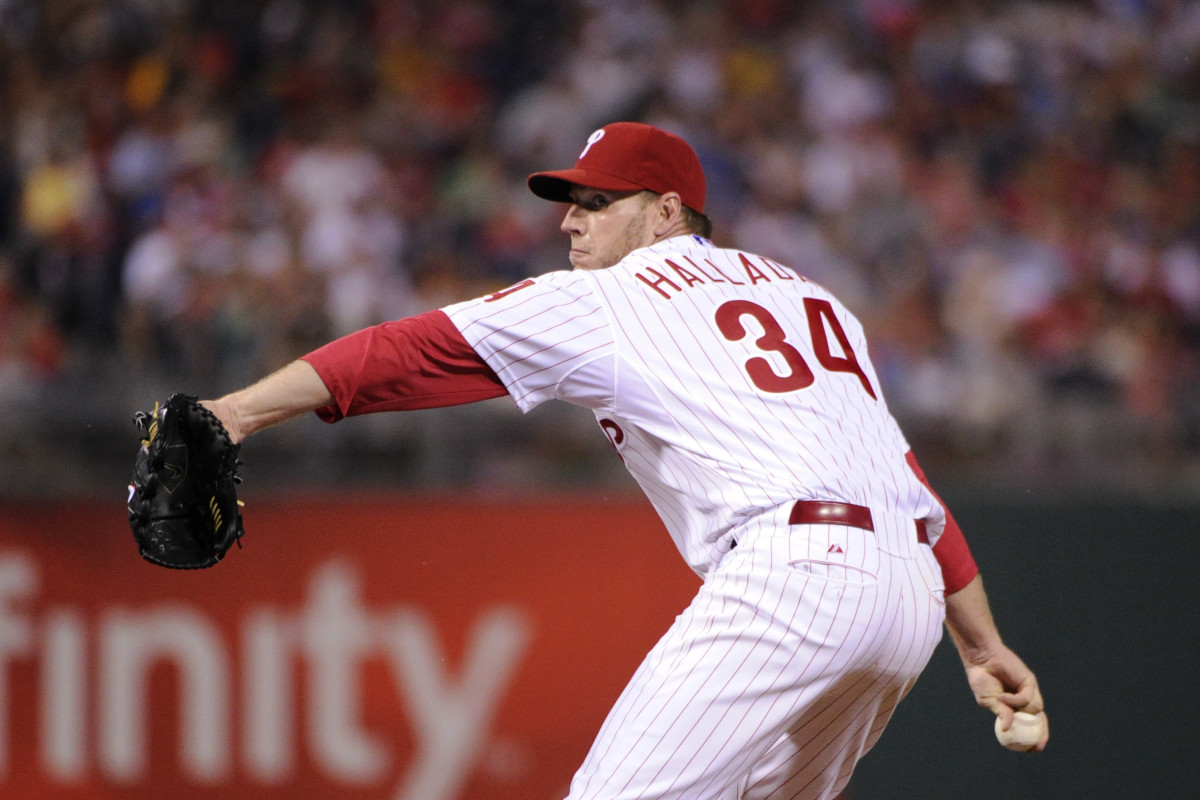
Until the Phillies inked Bryce Harper in 2019, Halladay was arguably the biggest name the Phillies had ever acquired through trade of free agency. Even though Halladay won his second Cy Young in 2010 and pitched two no-hitters that season, his magnum opus came in 2011 when his FIP plummeted over .80 points.
That season, Halladay pitched to a 2.35 ERA with eight complete games over 233.2 IP. He led the NL in FIP (2.20), ERA+ (163), and K/BB (6.29).
#4: Robin Roberts - 1953
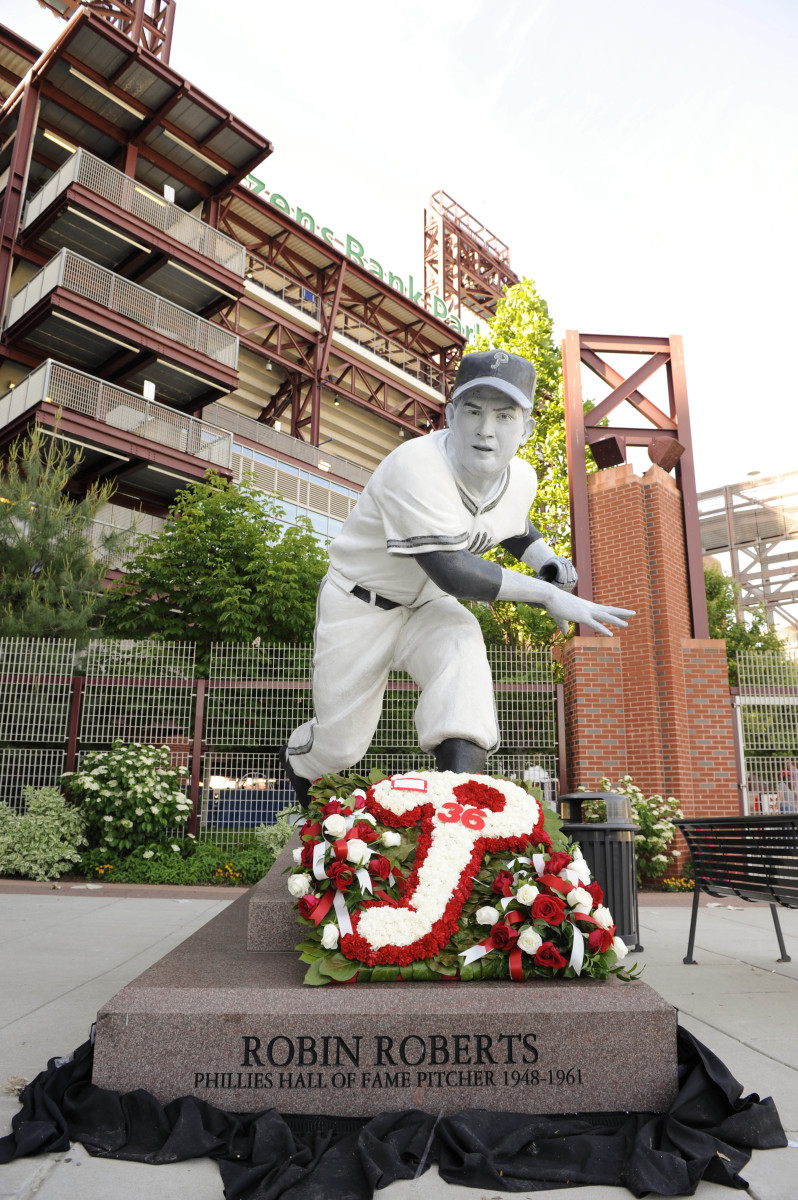
Many other Phillie starters have had seasons more efficient than Roberts, but the sheer volume over the course of his 1953 season is incredible, even by 1950s standards.
In 1953, Roberts pitched 346.2 innings, his third of five consecutive seasons leading MLB. He also led MLB in complete games (33), strikeouts (198), BB/9 (1.6) and K/BB (3.25). Roberts’ ERA was 2.75 and his ERA+ was 153.
#5: Aaron Nola - 2018
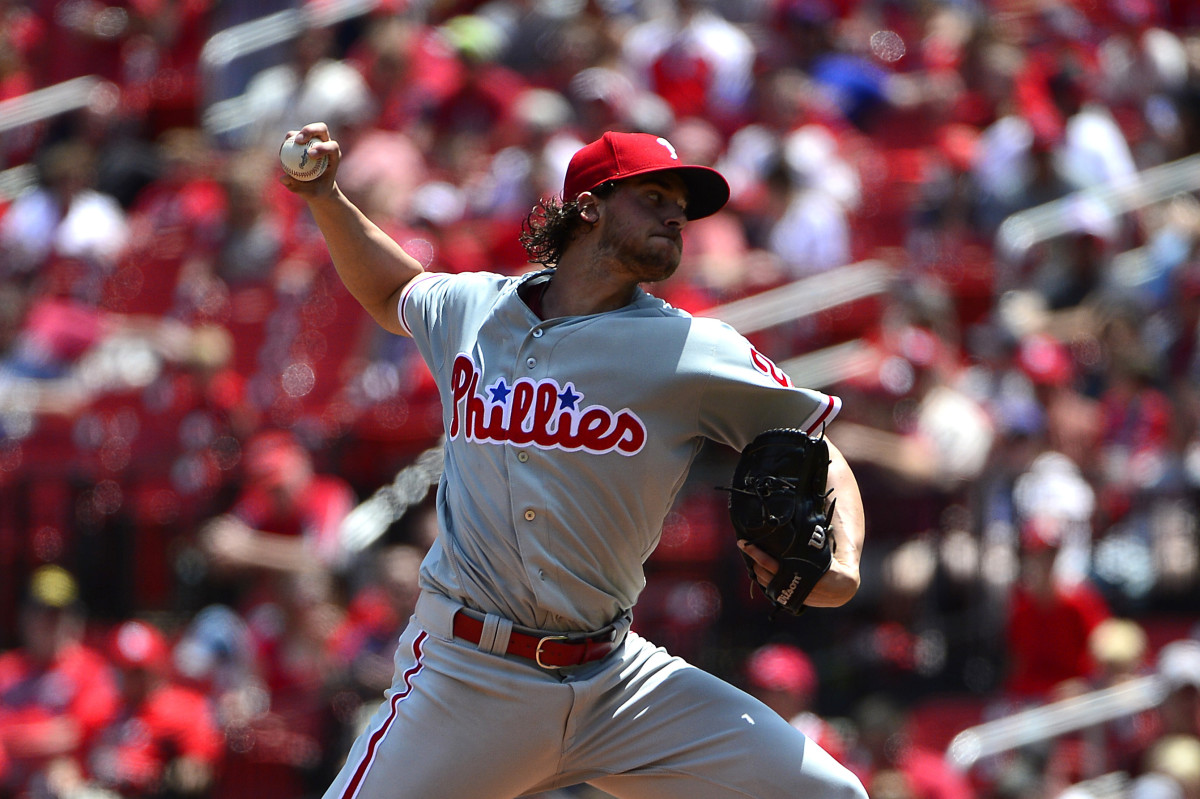
Nola’s career has been full of inconsistencies since his debut in 2015, but with the deepest valleys also come the highest peaks. In 2018, Nola put everything together for a season that will be incredibly difficult to top.
While many other Phillies pitchers could have challenged for the rotation’s final spot: Chris Short in 1964, Cliff Lee in 2011, Curt Davis in 1934, Dutch Leonard in 1948, etc., Nola's ERA+ topped them all.
That season Nola pitched to the third highest ERA+ (173) in Phillies history. His ERA was 2.37 and he allowed just one extra unearned run for an RA/9 of 2.46. Nola also struck out 224 batters, had a WHIP of 0.975 and allowed just 0/7 HR/9. Unfortunately for Nola in Cy Young voting, he was outshined by Jacob deGrom putting up the best season of his career.
Bullpen:
Closer: Brad Lidge - 2008
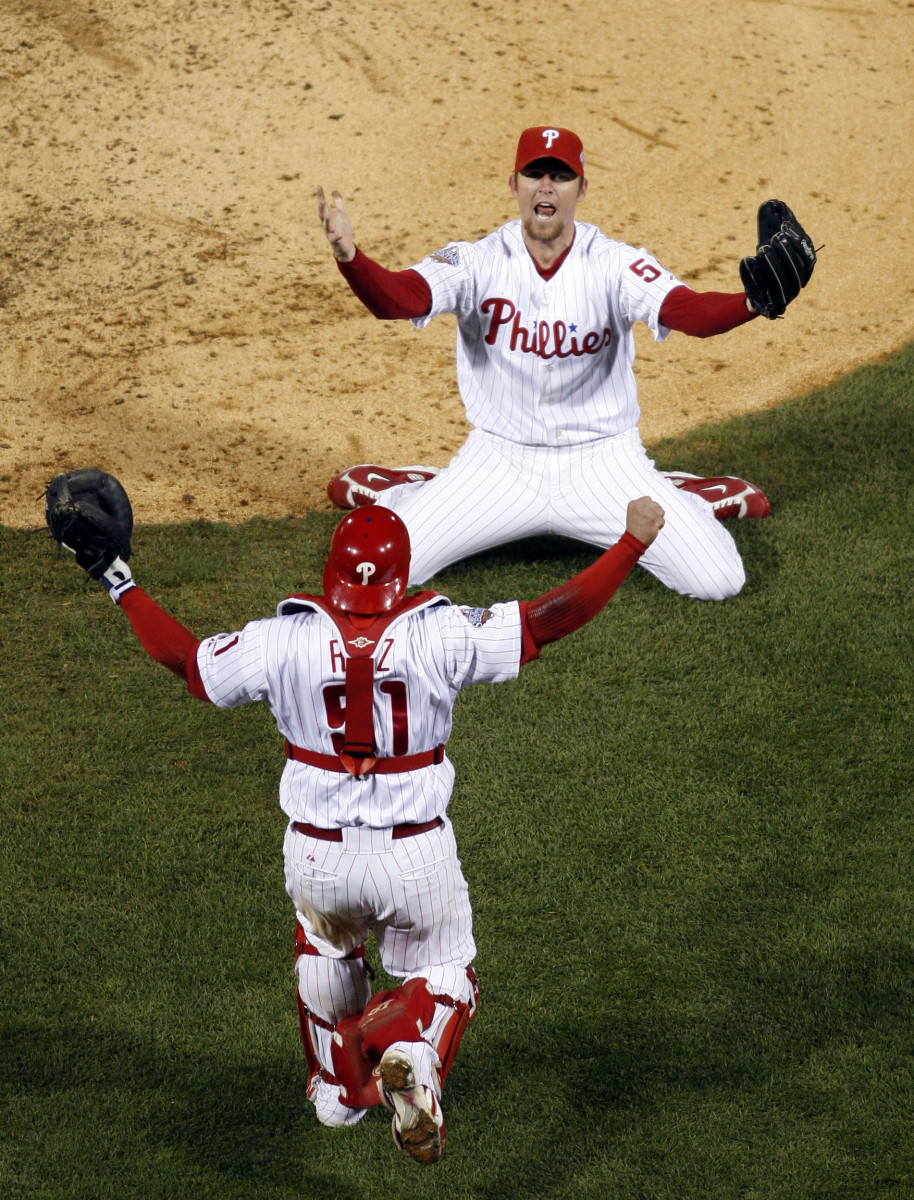
Lidge was “lights out” 2008. His perfect 48-for-48 season was legendary. Though he certainly made fans sweat on occasion, his brilliance that season was undeniable. In 2008, Brad Lidge threw 69.1 innings for a 1.95 ERA, then threw 9.1 IP in the postseason for a 0.96 ERA.
Middle Relief: Tug McGraw - 1980
In 1980, the closer role was not as defined as it is today or even as defined as it was by 2008. More than half of McGraw’s 57 appearances were four outs or more. That year, McGraw posted an ERA of just 1.46 in 92.1 innings, then in the postseason threw 15.2 more innings with an ERA of 2.87.
Long Relief: Jim Konstanty - 1950
Konstanty is one of just two relievers in history to win an MVP award, the other being Rollie Fingers 1981. Back in 1950, the role of a reliever was entirely different. On two occasions, Konstanty threw nine innings or more in relief. That season, he appeared in 74 games and pitched 152 innings for an ERA of 2.66. Konstanty also pitched eight innings of one-run ball in Game 1 of the 1950 World Series.
Lefty Specialist: Billy Wagner - 2005
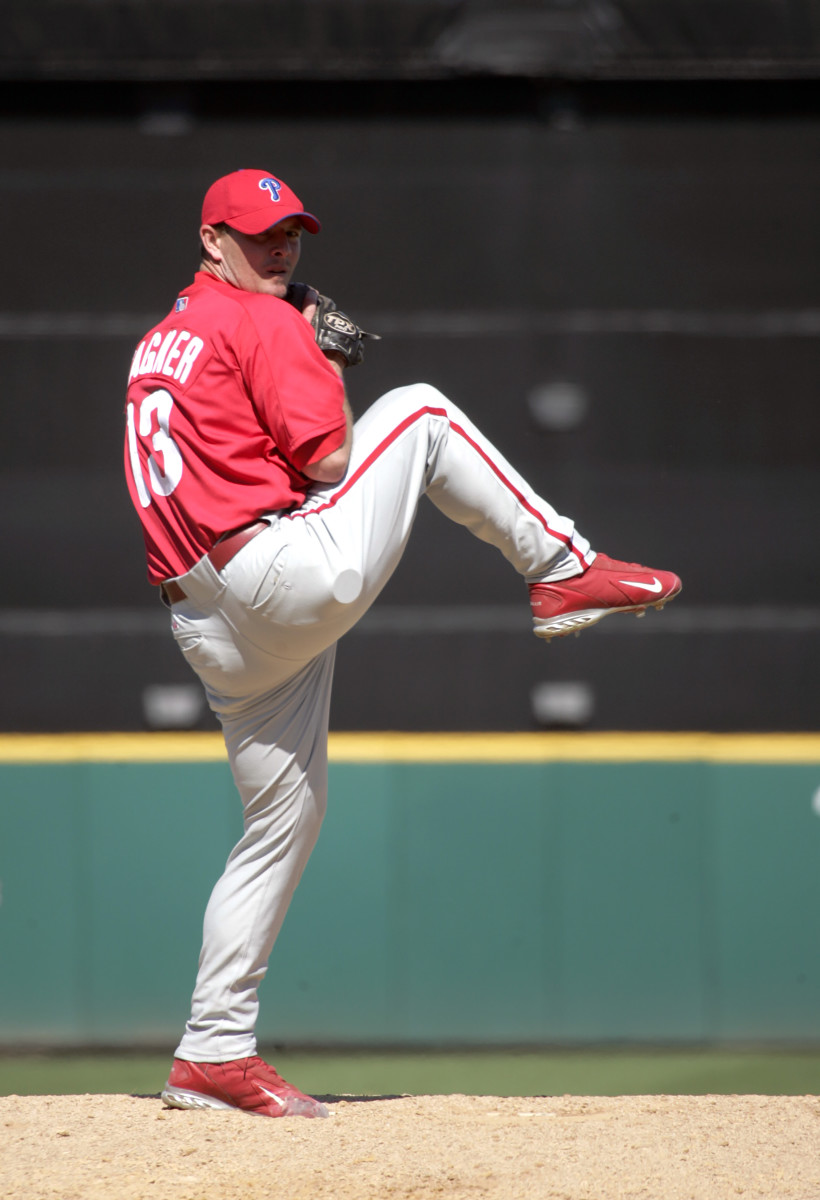
Though Wagner is reviled in Philly for his time in New York, it’s impossible to deny his effectiveness in 2005. That season, in 75 games and 77.2 IP, Wagner held lefties to a slash of .218/.192/.170; he didn’t allow one home run. While righties did find some success against Wagner, his season ERA was still a miniscule 1.51.
More From SI's Inside The Phillies:
- What Does the Lockout Mean for Suzuki?
- Report: Phillies Interested in Slugger Kris Bryant
- Who are the Best Remaining Free Agents on the Market?
Make sure to follow Inside the Phillies on Facebook and Twitter!
